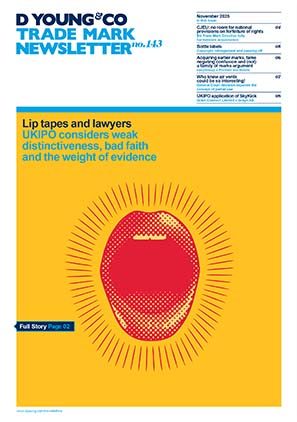Who knew air vents could be so interesting! General Court decision expands the concept of partial use
The applicant, Bouwbenodigdheden Hoogeveen BV (BHB) has a European Union trade mark (EUTM) registration for BIENENBEISSER covering metal building materials including “air vents” in class 6 and “building materials (non-metallic), including air vents” in class 19. In 2021, a third party filed an application for revocation of the EUTM arguing non-use.
Background
BHB provided evidence of use for metal air vents in class 6, which led the Cancellation Division of the EUIPO to revoke the contested mark for all goods, except for metallic air vents in class 6.
BHB appealed to the EUIPO’s Board of Appeal and was unsuccessful, so it filed an action with the General Court. The action was limited to the revocation of non-metallic air vents in class 19.
It was undisputed that BHB had used its trade mark for metallic air vents in class 6. The question was whether this also constituted genuine use for non-metallic air vents in class 19.
BHB submitted that it made genuine use of the contested mark in connection with the homogeneous category of goods “air vents” in both classes 6 and 19. According to the applicant, the proof of use of the mark which it provided for metallic air vents meant that the registration of the mark could also be maintained for non-metallic air vents. The fact that metallic and non-metallic air vents come within two different classes of the Nice Classification does not call into question the fact that “air vents” constitute one and the same homogeneous category of goods. First, the classification system was adopted for purely administrative purposes. Second, metallic and non-metallic air vents have the same purpose and intended use, namely to prevent pests from entering spaces in brick structures, while maintaining the ventilation of those structures, with the result that those two types of air vent are interchangeable.
The General Court’s decision
The General Court upheld the appeal for the following reasons:
- A consumer who wishes to purchase a product in a category that has been defined particularly precisely and narrowly, which cannot be significantly divided into further subcategories, will associate all the goods belonging to that category with the contested mark, so the mark will fulfil its essential function of guaranteeing the origin of those goods or services. Therefore, if genuine use is established for some of the goods in such a homogeneous category, genuine use has to be accepted for all goods in that category.
- This approach is supported by the concept of partial use, which is to prevent a trade mark owner from losing all protection for goods which, although not strictly identical to those in respect of which genuine use has been proven, are not in essence different from them and belong to a single group, which cannot be divided other than in an arbitrary manner. Thus, a trade mark owner does not need to establish use for all the commercial variations of similar goods but merely for goods which are sufficiently distinct to constitute coherent categories.
- The determination of a homogeneous group must be based on the purpose or intended use of the goods because the consumer’s choice is based on these criteria. It is decisive whether a consumer who wishes to purchase a product falling in the category of goods covered by the mark in question will associate all the goods belonging to that category with that mark. The judges found that the classification of the goods does not play a role in determining a coherent category.
- BHB had submitted evidence that metallic and non-metallic air vents have the same intended use, purpose, appearance, distribution channels and are equally effective, resistant and efficient, with the result that, when those goods were purchased, the material from which they are made plays only a secondary role in the consumer’s choice.
- The court held that the Board of Appeal did not provide sufficient reason as to why these arguments were not sufficient to establish that metallic and non-metallic air vents were not part of a homogeneous group. The judges also dismissed the EUIPO’s argument that BHB “chose” to file for the registration of metallic and non-metallic air vents in two different classes. BHB had to do this because the Nice Classification requires protection in two different classes, depending on the materials of the products.
Takeaway
The decision builds considerably on the principle of partial use and as a consequence, owners of marks that have been registered for goods or services in different classes but which fall into the same homogeneous category need only to establish genuine use for one of these goods in order to maintain or enforce their registration for all terms in that category. Presumably, this finding would also apply to goods or services in the same class which fall within the same clear category.
Case details at a glance
Jurisdiction: EU
Decision level: General Court
Parties: Bouwbenodigdheden Hoogeveen BV v EUIPO
Date: 09.07.2025
Citation: T-144/24
Link to decision: dycip.com/t-144-24

